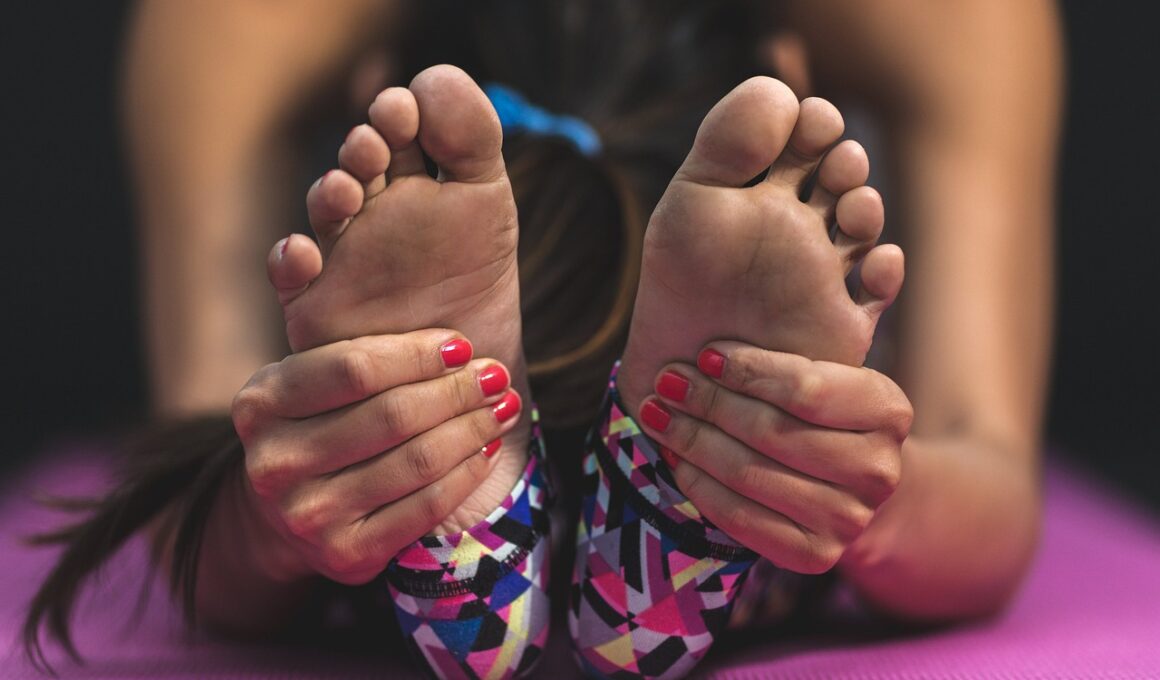How Daily Flexibility Routines Improve Overall Health
Incorporating daily flexibility routines into your life can significantly enhance your overall health. Flexibility is the ability of a muscle or a group of muscles to lengthen passively through a range of motion. Regular stretching not only increases flexibility but also aids in injury prevention. Improved flexibility can lead to better performance in physical activities, enhancing muscular coordination. By dedicating just a few minutes each day, you can promote blood flow to your muscles and increase the circulation of synovial fluid in your joints. As a result, flexibility routines can improve joint health. Moreover, increased flexibility allows for greater mobility, which is essential for maintaining an active lifestyle as you age. Reduced stiffness in muscles and joints enhances functional movement, resulting in better balance and posture. Daily routines may include static stretching, dynamic stretching, or yoga. You can choose exercises that suit your fitness level, gradually incorporating more complex movements as you progress. Ultimately, the commitment to flexibility enhances vitality and quality of life, paving the way for better overall health and longevity.
Daily flexibility routines benefit not only physical health but also contribute positively to mental well-being. Engaging in these routines fosters a mind-body connection, allowing you to focus on your movements and breath patterns. This mindfulness aspect can reduce stress levels significantly. Research has shown that stress can hinder flexibility, creating a cycle of tension and tightness. Stretching and flexibility exercises stimulate the release of endorphins, which are natural mood lifters. They can create a sense of calm and relaxation as one stretches, promoting better sleep patterns. Additionally, setting regular flexibility goals can create a sense of accomplishment. Achieving these goals strengthens motivation and encourages a consistent exercise routine. Incorporating variety into your flexibility exercises can keep you engaged and excited about your progress. Consider adding different techniques like tai chi, Pilates, or barre, which all emphasize flexibility and mobility. By nurturing both body and mind, flexibility routines allow individuals to enjoy daily activities with reduced discomfort and enhanced optimism. Adopting a flexible lifestyle opens up pathways to new experiences and improved interactions with the world.
As we age, flexibility and mobility become increasingly essential for overall health and functionality. Aging often leads to decreased muscle elasticity and joint stiffness, which can limit our daily activities. This limitation can lead to an increased risk of falls and injuries, making flexibility routines crucial. Daily stretching helps keep the muscles supple, maintaining their function and preventing the degeneration of connective tissues. It can also prevent the onset of age-related illnesses such as arthritis. Incorporating simple stretches into your routine can foster independence while supporting daily activities like bending, reaching, or walking smoothly. It’s crucial to listen to your body and adapt routines as needed to avoid injury. Engage in stretches targeting major muscle groups, including the hamstrings, quadriceps, and shoulders. Utilizing equipment such as resistance bands or yoga blocks can enhance your stretching practice, making it more effective. Group classes can provide motivation and camaraderie, encouraging a consistent approach to stretching. Remember to allocate time each day for these exercises to reap long-term benefits. Over time, a diligent commitment can lead to remarkable improvements in overall mobility and flexibility.
The Importance of Warm-Up and Cool Down
Understanding the importance of warm-up and cool-down sessions is vital in any flexibility routine. Before stretching, warming up the body is essential to prevent injury and improve efficiency during workouts. A brief warm-up increases blood flow to the muscles, making them more pliable and responsive. Warm-ups can include activities such as brisk walking, light jogging, or dynamic stretches that mimic movements you’ll perform in your workout. Similarly, cooling down is equally crucial for promoting recovery. After your flexibility routine, engaging in cool-down stretches helps gently bring your heart rate down. These stretches can enhance flexibility, allowing the muscles to return to their resting states. They help alleviate soreness and stiffness often experienced after physical activity. Take time to breathe deeply and reflect on your practice while cooling down. This mindfulness contributes positively to mental health and enhances relaxation. Dedicate a few minutes to these sessions to significantly improve the effectiveness of your flexibility routines. Balancing warm-up and cool-down phases with your flexibility exercises can maximize overall health benefits.
A consistent daily flexibility routine fosters habits that extend beyond physical health. As you cultivate a practice of stretching, you also develop discipline and commitment to your wellness. These personal developments create a sense of accountability and drive. Setting aside time for flexibility exercises each day can help anchor your day, providing structure amidst chaos. Whether it’s morning stretches to awaken your body or evening routines for relaxation, the schedule you create will align with your lifestyle. Recording your progress can also motivate continuous improvements, as measurable results encourage perseverance. Flexibility routines can be easy to incorporate into family activities. Engaging family members in stretching exercises fosters unity, encouraging a shared focus on health and well-being. Moreover, this approach cultivates curiosity and knowledge of body mechanics among younger generations, inspiring a lifelong dedication to health. Adopting daily practices encourages healthier choices and overall lifestyle improvements. Observing the enhancements in physical capabilities can ignite enthusiasm, reinforcing the importance of nurturing a flexible lifestyle that promotes vitality, longevity, and joy in living.
Creating a Personalized Routine
To maximize the benefits of daily flexibility routines, creating a personalized plan tailored to your needs and goals is essential. Begin by assessing your current flexibility levels and identifying areas that may require improvement. This self-assessment guides your choices, ensuring you focus on stretches that align with your specific requirements. Incorporating a variety of movements will keep your routine engaging and multifaceted. Consider areas such as your lower back, hamstrings, and hips. Research different stretching techniques and the benefits they offer, including static stretches, dynamic movements, and yoga. Mix these elements based on your interests and preferences to enhance adherence. Establish a schedule to maintain consistency, whether it’s a morning or evening routine. Gradual progression is vital; avoid overwhelming yourself with advanced stretches too soon. Always listen to your body’s feedback to ensure safety and effectiveness. Engaging with community resources, classes, or online tutorials can further enrich your experience, providing additional insights into proper form. By customizing your routine, you will establish a sustainable practice that fosters personal growth and overall wellness.
In conclusion, daily flexibility routines play a vital role in enhancing overall health through various aspects of physical and mental well-being. Routine engagement in stretching not only significantly improves flexibility but also supports stronger joints, better posture, and enhanced performance in physical activities. The interplay between mental and physical health becomes evident through mindfulness practices inherent in stretching. Cultivating the habit of daily flexibility routines nurtures resilience, discipline, and personal commitment to wellness. As we age, proactive measures to maintain flexibility are essential in promoting independence and vitality. Warm-up and cool-down phases ensure safety and effectiveness in our practices. Personalizing routines based on individual needs fosters a lifelong connection to health. The journey of improving flexibility is about enhancing one’s quality of life. By emphasizing these routines, individuals can unlock potential benefits that extend beyond mere physical improvements. The overall objective is to embrace an active lifestyle that thrives on flexibility, enriching daily experiences and nurturing holistic well-being. Choose to commit to this positive practice, and witness a powerful transformation in overall health that lasts.
Visibility in the joint range of motion is essential in daily life and flexibility translates into the ability of individuals to engage in various physical activities. Less susceptible to injuries caused by tight muscles, people with improved flexibility often lead more active lives, which contribute to better cardiovascular health. Furthermore, determining an individual’s degree of flexibility can indicate muscle strength and endurance levels. It’s essential to recognize the value of maintaining effective flexibility routines. Explore the options of joining group classes or seeking professional guidance for unique insights. As individuals grow comfortable with daily flexibility routines, they typically notice substantial advancements. Over time, this can lead to more challenging activities, invigorating a sense of accomplishment. Embrace the results of understanding how routine stretching not only improves flexibility but also nurtures mental clarity and peace. Strongly consider incorporating these practices every day to develop a sustainable, engaging approach to wellness. A flickering light of resilience will ultimately awaken individuals to better health outcomes. Investing time in flexibility routine training is undoubtedly a path leading toward improved quality of life.


